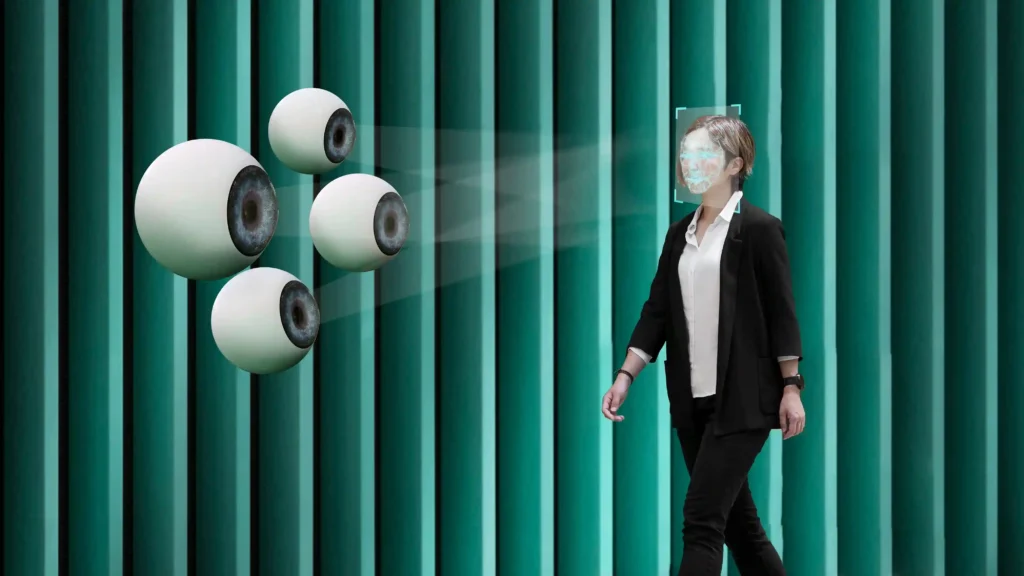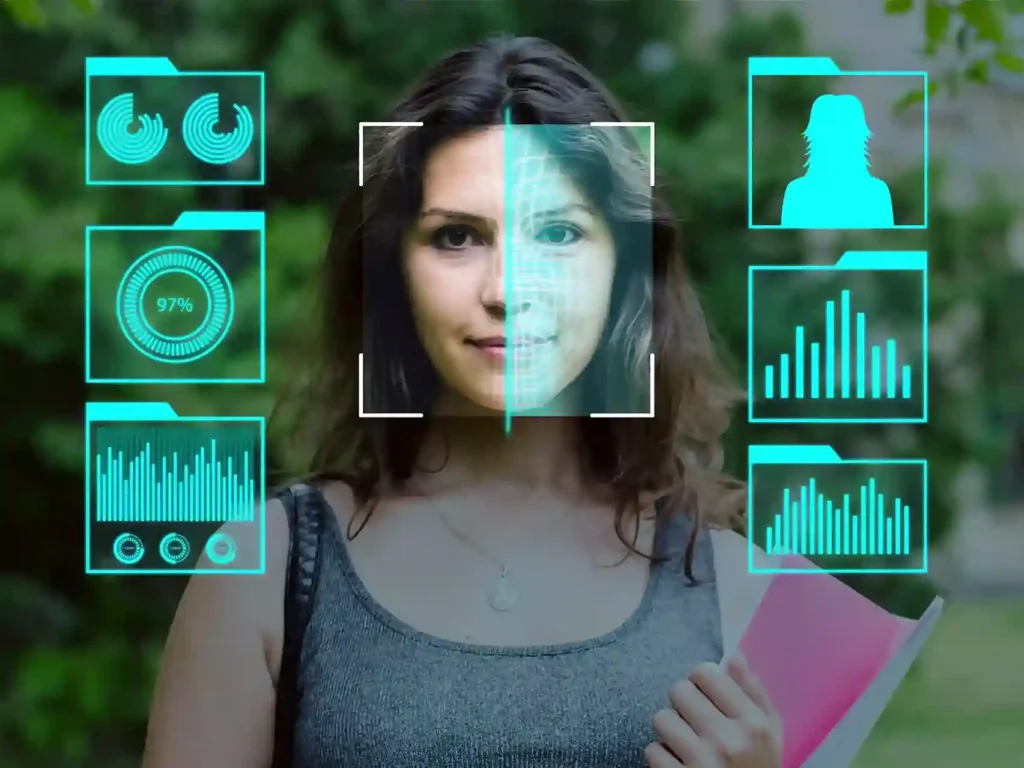Introduction
In today’s fast-evolving digital landscape, relying solely on traditional surveillance systems is like using a candle to light a stadium. While cameras can record, they often miss the critical context behind every movement or anomaly. Security blind spots remain a persistent threat, leaving businesses vulnerable to incidents they can’t even detect. That’s where AI Vision steps in. It doesn’t just record—it understands, learns, and acts. This shift from passive monitoring to intelligent surveillance is transforming security across every industry.
What Are Security Blind Spots?
Security blind spots refer to areas that surveillance cameras or guards fail to monitor effectively. These could be due to poor camera placement, limited visibility, or lack of real-time analytics. Such blind zones can become hotbeds for theft, accidents, or unauthorized activities.
In many setups, these areas go unnoticed until after an incident has occurred, often resulting in loss, damage, or operational disruptions. Identifying and eliminating these weak points is essential for comprehensive security.
Why Traditional Surveillance Falls Short
Traditional CCTV systems are reactive, not proactive. They rely heavily on human operators to monitor video feeds and detect irregularities—something that’s nearly impossible to do flawlessly 24/7.
Moreover, without intelligent analytics, these systems generate a massive volume of footage that often goes unwatched or reviewed only after an incident. This creates an opportunity gap where threats evolve, but defenses remain outdated.
What is AI Vision?
AI Vision is a smart surveillance technology that enables machines to interpret and respond to visual data just like a human, but faster and more accurately. It doesn’t just capture what’s in front of a lens—it analyzes, understands patterns, and learns over time.
Using AI algorithms, it can detect faces, recognize license plates, spot suspicious behavior, and send real-time alerts—all without human intervention. The result? A highly responsive, adaptive, and reliable security system.
Core Components of AI Vision
At the heart of AI Vision are three key technologies: computer vision, machine learning, and edge computing. Computer vision allows the system to “see” and interpret images, while machine learning helps it recognize patterns and make decisions.
Edge computing ensures all this happens at the source, minimizing delay and dependency on cloud processing. Together, these technologies create a seamless, efficient, and intelligent surveillance solution.
From Analog Cameras to Smart Surveillance
The journey of surveillance systems has evolved dramatically—from grainy analog cameras to high-definition IP systems. But even HD footage means little if it isn’t intelligently analyzed.
Smart surveillance powered by AI has redefined what’s possible. Today’s cameras do more than record—they track movement, flag anomalies, and even predict behaviors based on historical data.
How AI Has Disrupted the Security Landscape
AI has shifted the surveillance paradigm from manual observation to autonomous detection. It’s no longer about “recording” an event—it’s about “preventing” it.
Organizations now use AI Vision to proactively identify threats, reduce false alarms, and make data-driven decisions that enhance overall safety. This disruption has significantly elevated the standards and expectations from modern security infrastructure.
Smart Object Detection and Tracking
One of AI Vision’s standout features is its ability to detect and classify objects with pinpoint accuracy. Whether it’s a vehicle, person, or unattended package, AI systems can distinguish and track them in real-time.
This capability eliminates guesswork and allows for targeted responses. For instance, the system can ignore harmless movement (like a tree swaying) but instantly flag a person loitering near a restricted zone.
Real-Time Incident Detection
AI Vision can identify incidents the moment they occur—like a person falling, a fire breaking out, or an unauthorized entry. It immediately sends alerts to relevant teams, ensuring rapid response.
This real-time capability drastically reduces response time, minimizing damage or injury, and potentially saving lives. It’s the difference between reacting late and acting in the moment.
Predictive Analytics for Proactive Security
AI doesn’t just analyze the present—it learns from the past. By collecting and studying behavioral patterns, AI Vision predicts where and when incidents are likely to occur.
This enables security teams to deploy resources more effectively, anticipate threats, and prevent incidents before they unfold. It’s a game-changer in transforming security from reactive to proactive.
Commercial Buildings and Offices
In office environments, AI Vision helps monitor unauthorized access, visitor movement, and sensitive zones like server rooms. It ensures compliance with safety protocols and can even aid in managing employee attendance.
Additionally, it helps optimize energy and operational efficiency by analyzing movement trends and usage patterns across different areas of the facility.
Airports and Transportation Hubs
Airports are high-traffic areas that demand advanced security solutions. AI Vision helps identify unattended luggage, detect potential threats, and monitor crowd behavior with surgical precision.
By integrating with access control and emergency systems, it enables faster threat detection and evacuation procedures, ensuring passenger safety and regulatory compliance.
Manufacturing and Warehousing
AI Vision plays a critical role in maintaining safety standards in factories and warehouses. It can detect non-compliance with PPE regulations, spot dangerous machine interactions, and monitor unauthorized personnel.
Moreover, it provides insights into workflow bottlenecks and operational inefficiencies, aiding productivity and workplace safety simultaneously.
Residential Security Systems
For homeowners, AI Vision enhances protection by identifying suspicious activity around doors, garages, and perimeters. It can detect package thefts, intruders, or unusual movement and alert residents instantly.
Unlike traditional systems, AI doesn’t just alert when someone is present—it alerts who is present and why that might be a concern.
Smart Cities and Public Spaces
AI Vision is vital for smart cities striving for safer, more efficient public environments. It helps monitor traffic flow, detect criminal activity, and ensure crowd control during public events.
City administrators use AI-driven insights to improve infrastructure, reduce response times, and make urban areas more livable and secure for citizens.
Why Speed Matters in Threat Detection
In emergency situations, delays can be costly—both financially and in human terms. That’s why AI Vision powered by edge computing processes data locally, delivering decisions in milliseconds.
This local processing eliminates reliance on unstable internet connections or cloud latency, making it perfect for high-risk environments where immediate action is critical.
Reducing Latency with Local Processing
Edge computing ensures video feeds are analyzed at the device level, drastically reducing latency. This speed is crucial in detecting fast-moving threats like intrusions, accidents, or hazardous conditions.
Faster processing also reduces bandwidth use and keeps critical security operations running smoothly—even during internet outages.
AI Surveillance vs. Privacy Rights
As with any powerful technology, the ethical use of AI Vision is paramount. Surveillance systems must be designed with respect for privacy, transparency, and regulatory compliance.
Balancing safety with individual rights is essential. Implementing opt-in policies, clear signage, and proper data encryption helps build public trust and avoids legal complications.
How to Implement AI Ethically
Ethical AI implementation involves using only necessary data, avoiding bias in algorithms, and maintaining strict access control. Organizations should audit their AI systems regularly and remain transparent about data usage.
Engaging stakeholders—including employees and the public—early in the process also fosters a culture of accountability and ethical awareness.
Benefits of AI Vision Over Traditional Systems
AI Vision reduces human error, eliminates fatigue, and offers consistent, 24/7 surveillance without breaks. It flags real threats while ignoring harmless movements, ensuring fewer false alarms.
Moreover, it improves efficiency by automating manual processes like incident logging, allowing security personnel to focus on high-value tasks.
AI + IoT + Access Control
Combining AI Vision with IoT devices and access control systems creates a multi-layered security infrastructure. For example, if AI detects an intruder, the system can automatically lock doors, trigger alarms, and alert guards.
This seamless integration enhances situational awareness and ensures a coordinated, automated response to threats.
Using Analytics to Improve Security Posture
AI Vision provides a wealth of data—from heatmaps to movement trends—that helps organizations fine-tune their security strategy. These insights support better resource allocation, staff scheduling, and infrastructure planning.
By turning raw data into actionable intelligence, companies can stay one step ahead of security threats.
Initial Investment and ROI
Yes, AI Vision requires an upfront investment, but the long-term ROI is undeniable. Reduced theft, fewer liabilities, better compliance, and improved efficiency all contribute to significant savings.
Smart budgeting and modular implementation can help businesses of any size gradually adopt AI-based security without stretching their finances.
Need for Skilled Personnel
Deploying AI Vision systems requires trained professionals to manage and interpret the data correctly. Upskilling your existing team or hiring specialists can ensure you make the most of the technology.
The good news? Many vendors now offer intuitive dashboards and support services that simplify system management.
Data Storage and Bandwidth Concerns
High-resolution video combined with real-time analytics can demand substantial bandwidth and storage. It’s essential to assess your infrastructure and consider hybrid models (cloud + edge) to balance cost and performance.
Investing in scalable storage solutions ensures you’re prepared for future data growth without bottlenecks.
The Future of AI in Security
The next frontier for AI Vision includes emotion detection, behavioral analysis, and autonomous patrol drones. Cameras will not only see and understand but also adapt to each environment over time.
As AI continues to evolve, it will become more predictive, more ethical, and more seamless in integrating with every aspect of urban and enterprise security.
Key Features to Look For
When choosing an AI Vision solution, prioritize features like facial recognition, real-time alerts, edge computing, and third-party integration. Look for customizable analytics and user-friendly dashboards.
Make sure your vendor offers regular updates, privacy compliance, and post-deployment support to ensure sustained performance.
Vendor Evaluation Tips
Ask for case studies, trial versions, and client references. Avoid black-box solutions and opt for transparent, scalable systems. Compare pricing models, support options, and platform compatibility.
A reliable vendor doesn’t just sell a product—they offer a long-term security partnership.
Conclusion
AI Vision is more than a security tool—it’s a smart partner in protecting people, property, and operations. From eliminating blind spots to enabling predictive protection, it’s reshaping the future of surveillance.
Whether you run a business, manage a city, or secure a home—AI Vision empowers you to see more, know more, and act faster. Trident VIS empowers industries like retail, manufacturing, healthcare, and smart city infrastructure with advanced video analytics solutions designed to meet their specific needs. Transform your safety, security, and operational efficiency with Vision Intelligence Systems. For more insights, follow our LinkedIn page and stay updated on the latest innovations!
FAQs
1. What is the biggest advantage of AI Vision in security?
The ability to detect and respond to threats in real-time, reducing risk and improving safety across all sectors.
2. Can AI Vision completely replace human guards?
AI enhances security but doesn’t replace human judgment. It supports guards by handling repetitive tasks and offering real-time insights.
3. Is AI Vision suitable for small businesses?
Yes, scalable solutions are available for startups and SMEs, offering budget-friendly packages with essential features.
4. How does AI detect suspicious behavior?
AI analyzes patterns of movement and behavior using pre-trained models to flag anomalies like loitering, trespassing, or erratic movement.
5. Are AI security systems hard to maintain?
Most modern systems are user-friendly and come with cloud support, automatic updates, and 24/7 technical assistance.



